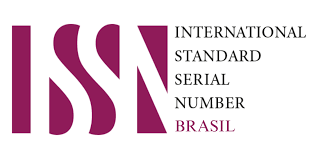Submissões
Condições para submissão
Como parte do processo de submissão, os autores são obrigados a verificar a conformidade da submissão em relação a todos os itens listados a seguir. As submissões que não estiverem de acordo com as normas serão devolvidas aos autores.Diretrizes para Autores
As submissões devem ser feitas única e exclusivamente pelo site da Revista de Agricultura: www.revistadeagricultura.org.br. Os trabalhos devem estar em arquivo Word, com fonte Times New Roman, tamanho 12, espaçamento 1,5, podendo ser submetidos em Português, Inglês e Espanhol. Todas as páginas devem estar sequencialmente numeradas. Cada trabalho deve vir acompanhado de um resumo, abstract, palavras-chave, key words.
- Artigos divulgam a aplicação de pesquisas científicas seguindo metodologia apropriada, analisam e discutem os resultados obtidos e seus impactos na produção agropecuária, agroindustrial ou no mercado de produtos agroindustriais.
- Revisões são trabalhos que sistematizam o conhecimento existente sobre o assunto em foco, trazendo novas interpretações, conceitos e encaminhamentos.
- Trabalhos históricos não publicados são projetos de pesquisa relevantes que não foram publicados, acompanhados de uma apresentação que destaque sua relevância e importância.
- Resenhas devem resumir e apontar uma avaliação crítica do texto sob análise, discutindo a validade dos argumentos, a relevância da metodologia e a contribuição para o campo de estudo, tendo referências sólidas como base. As resenhas não são apenas sobre novas obras, mas também sobre obras e autores de referência e suas contribuições mais relevantes.
A responsabilidade pelo conteúdo publicado é expressamente do(s) autor(es), sendo que a Revista de Agricultura não se responsabiliza por ideias, conceitos, opiniões e eventuais posicionamentos contidos nos textos.
Qualquer modificação na autoria de artigos, revisões, trabalhos históricos não publicados ou resenhas – seja inclusão e/ou retirado de autores – só poderá ser feita mediante justificativa por escrito, a qual contenha a assinatura de todos os autores originais e os afetados pela alteração.
Os artigos, revisões, trabalhos históricos não publicados e resenhas aceitos, somente serão publicados mediante o pagamento da taxa de publicação.
Taxa de publicação
Para artigos aprovados, os autores deverão pagar uma taxa de publicação, que é US$ 100.
Diretrizes editoriais adotadas entre 2017 e maio-2025 (Brazilian Journal of Agriculture)
Submission
Start the submission process by reviewing the Instructions for Authors (http://www.fealq.org.br/ojs/index.php/revistadeagricultura/about/submissions#authorGuidelines)
Authors should submit manuscripts through the online system at http://www.revistadeagricultura.com.br
A manuscript submission file in Microsoft Word (or a compatible format) is required.
There is no submission or manuscript evaluation charges. The authors will be required to pay a publication fee just after the manuscript acceptance.
Manuscripts should be organized as one file containing the main document. MS Word for Windows or compatible software should be used for the main document, with 12-point Times New Roman, 3.0-cm margins up and left, 2.0-cm margins down and right, and 1.5 spacing. Organize the main document in the following order: Title, Abstract (maximum of 150 words), Keywords (maximum of six), Title and Abstract in foreign language (Portuguese, Spanish, French or Italian) Introduction, Materials and Methods, Results, Discussion,Conclusion, Acknowledgments (optional), References.
IMPORTANT NOTICE
- The article must be in English
- Title: Up to 250 characters
- Authors’ full names and contribution: Authors should have participated sufficiently in the work to take public responsibility for appropriate portions of the content.
- Abstract: Abstracts are limited to 150 words and structured into objectives, method, results, and conclusions. Citations or abbreviations (except internationally recognized abbreviations, such as weights, measures, and physical or chemical abbreviations) are not permitted. Authors are strongly encouraged not to display numerical statistical information but to merely state what is significantly different (or not) between the described parameters.
- Keywords: 3-6 items
- Introduction: The introduction should set the purpose of the study, provide a brief summary (not a review) of previous relevant studies, and state the new advances in the current investigation. The introduction should not include data or conclusions from the work being reported. A final sentence summarizing the novel finding to be presented is permissible.
- Materials and Methods: This section should briefly give clear and sufficient information to permit the study to be repeated by others. Standard techniques only need to be referenced. Previously published methods may be briefly described following the reference.
- Results and Discussion: The results section should be a concise account of the new information that was discovered, with the least personal judgment. Do not repeat in text all the data in the tables and illustrations but briefly describe what these data comprise. The discussion should include the significance of the new information and relevance of the new findings in light of existing knowledge. Only unavoidable citations should be included. Citation to review articles are not encouraged in this section.
- Conclusion: Briefly concludes the discussion.
- Acknowledgements (optional): This section should be short, concise, and restricted to acknowledgements that are necessary.
- References: Citations that appear in the text should be referenced. References must be restricted to directly relevant published works, papers, or abstracts. Unpublished papers, unless accepted for publication, should not be cited. Work that is accepted for publication should be referred to as "in press" and a letter of acceptance of the journal must be provided. Authors are responsible for the accuracy and completeness of their references and for correct textcitation. Does not allow authors to cite congress or workshop abstracts, technical articles, dissertations and theses. does not recommend that authors cite statistical analyses or software packages as references. These tools should be mentioned in the text (Materials and Methods) by including the specific procedure and the name of the software with its version and/or year, e.g., “…statistical procedures were conducted using PROC NLIN in SAS (Statistical Analysis System, version 9.2)”.
- References in text: References and citations should be formatted in the 'author, year' or 'name (year)' style. Remember to ensure that text citations match the list of references. Examples:
- 1. Single author: Berti Filho (2000) or (BERTI FILHO, 2000).
- 2. Two authors: Berti Filho and Vettorazzi (2017) or (BERTI FILHO & VETTORAZZI, 2017).
- 3. Three or more authors: Berti Filho et al. (2009) or (BERTI FILHO et al., 2017).
- 4. Arrange references alphabetically and chronologically within brackets, and use semicolons (;) to separate multiple citations within brackets, e.g.: (BERTI FILHO, 2003; MOURA, 2006; VETTORAZZI & SILVA, 2003).
- 5. Order multiple citations 'same author-same date' with the aid of lower case letters, e.g.: (VETTORAZZI, 2016a, b).
REFERENCES:
AUTHOR or AUTHORS. Year. Title. Scientific journals or Book. Locality of the article was published. Volume, Number, Pages.
TIKHNOVICH, I. A.; PROVOROV, N. A. 2011. Microbiology is the basis of sustainable agriculture: An opinion. Annals of Applied Biology, Malden, v.159, n.2, p.155-168.
NEWMANN, A. L.; SNAPP, R. R.1997. Beef cattle, New York: John Wiley, 7th ed. 883p.
BRUNO, I.P.; UNKOVICH, M.J.; BORTOLOTTO, R.P.; BACCHI, O.O.S.; DOURADO-NETO, D.; REICHARDT, K. 2011. Fertilizer nitrogen in fertigated coffee crop: Absorption changes in plant compartments over time. Field Crops Research, Amsterdam, vol. 124, p.369-377. Available at: <https://doi.org/10.1016/j.fcr.2011.07.004> Accessed on: Jun. 3, 2020.
Tables and figures
Tables: Number tables sequentially using Arabic numerals; tables should be created with the "Tables" function of MS Word or in MS Excel (manuscripts showing tables pasted as figures will be returned to authors).
The title of the table should appear immediately above the body of the table.
Figures/Graphs:
- Graphs should be created using MS Excel.
- Supply photographs as tagged image format files [TIFF], 300 DPI.
- Number figures consecutively in the order they appear in the text.
- Figures should provide enough information that the reader can understand them without referring to the text.
- For figures that contain more than one panel, designate the panels with capital letters (no parentheses and no periods following letters) in the upper left-hand corner of each panel, if possible.
- Wording in figures must match the rest of the manuscript with regard to capitalization, italics, and the use of symbols.
Please make sure to submit your manuscript in the exact format that is described below. Failure to do so will cause the submission to be returned to you during the preliminary examination by the Editorial Office.
Política de Privacidade
Os nomes e endereços informados nesta revista serão usados exclusivamente para os serviços prestados por esta publicação, não sendo disponibilizados para outras finalidades ou terceiros.







